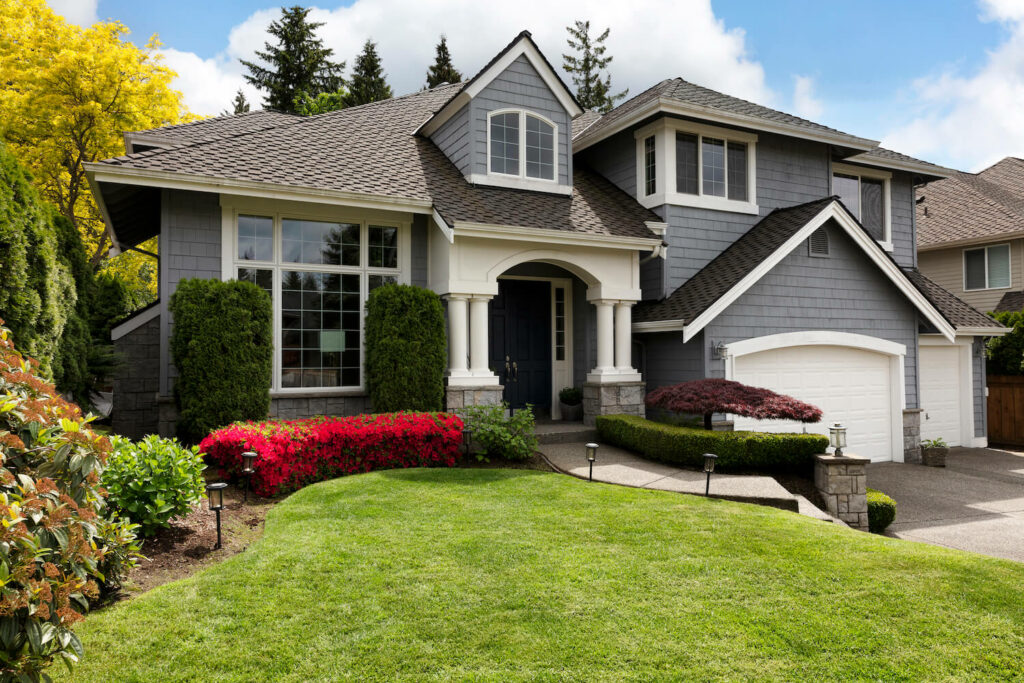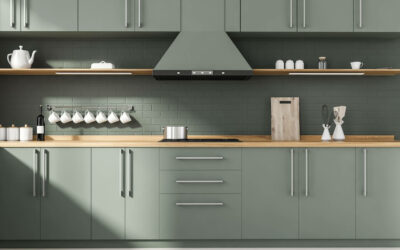
Choosing the right exterior paint color for your home is a significant decision that goes beyond personal preference. The color of your home’s exterior not only reflects your style but also interacts with the surrounding landscape. A harmonious blend between your house and its natural surroundings can enhance curb appeal and create a welcoming atmosphere.
In this guide, we will explore the key factors to consider when choosing an exterior home paint color that complements your landscaping.
Consider Your Surroundings
Before diving into paint samples, take a moment to observe and appreciate your surroundings. Consider the colors present in your landscape, including the hues of trees, flowers, and any natural elements. Take note of the dominant colors and those that stand out. This observation will provide valuable insight into the palette that naturally exists around your home.
Climate and Regional Influences
The climate and geographical location of your home can significantly impact the choice of exterior paint color. In warmer regions, light and cool colors can help reflect sunlight and keep your home cooler. In colder climates, darker colors may absorb more heat and contribute to a warmer interior. Additionally, consider regional architectural styles and color preferences, as these can influence the overall aesthetic harmony of your neighborhood.
Architectural Style
The architectural style of your home is a crucial factor in determining the appropriate color palette. Different styles have traditional color schemes that resonate well with their design. For example, a Victorian-style home might benefit from rich, bold colors, while a coastal cottage may be better suited to soft pastels. Research the recommended color schemes for your home’s architectural style to maintain authenticity and curb appeal.
Highlighting Architectural Features
Choose an exterior paint color that enhances and highlights the architectural features of your home. For instance, if you have beautiful trim, consider a contrasting color to make it stand out. This adds depth and character to your home’s facade. Similarly, dark colors can recede, making lighter elements pop, while light colors can emphasize certain architectural details.
Personal Style and Preferences
While it’s essential to consider the external environment and architectural style, your style and preferences should not be overlooked. Your home is an extension of your personality, and the color you choose should resonate with your taste. Consider colors that you naturally gravitate towards and feel comfortable living with daily.
Test Colors in Different Lighting
The appearance of a color can vary significantly depending on the lighting conditions. Test your chosen paint colors in natural daylight, during overcast weather, and at night under artificial lighting. This will help you assess how the colors interact with different light sources and ensure that you are happy with the chosen palette in all conditions.
Undertones Matter
Pay attention to the undertones of the paint colors you are considering. Undertones are subtle, underlying tones that can affect how a color appears. For example, a beige with pink undertones may clash with brickwork that has orange undertones. Ensure that the undertones in your chosen paint colors complement rather than clash with other elements in your landscape.
Complementing Natural Materials
If your home has natural materials like stone or wood, consider how the paint color will interact with these elements. For example, a warm beige may complement the earthy tones of stone, while a cool gray might enhance the modern feel of a sleek wooden facade. The goal is to create a cohesive look that brings out the best in both the paint color and natural materials.
Landscaping Features
Your landscaping features, such as garden beds, trees, and hardscape elements, play a significant role in the overall aesthetics. Choose a paint color that complements and enhances these features. For example, a green exterior might blend seamlessly with lush foliage, while a bolder color can create a striking contrast against a well-manicured garden.
Neighborhood Harmony
While expressing your style is important, it’s also crucial to consider the overall harmony of your neighborhood. Take note of the colors used in neighboring homes to avoid clashing or standing out too starkly. A cohesive color palette in the neighborhood contributes to a visually pleasing and unified streetscape.
Long-Term Maintenance
Consider the practicality of the chosen paint color in terms of long-term maintenance. Lighter colors may show dirt and stains more easily, while darker colors can fade over time. Factor in the level of maintenance you are willing to commit to and choose a color that aligns with your lifestyle.
Customizing Color Palettes
If you find it challenging to settle on a single color, consider customizing a palette that incorporates multiple shades. This can add depth and visual interest to your home’s exterior. Choose a primary color for the main body, a complementary color for the trim, and perhaps an accent color for doors and shutters. This approach allows for creativity while ensuring a cohesive and balanced overall look.
Seasonal Considerations
Take into account the changing seasons and how your chosen color will harmonize with the landscape throughout the year. A color that complements the vibrant greens of spring and summer may also work well with the warm hues of autumn. Consider the seasonal aspects of your surroundings, including blooming flowers, fall foliage, or even the tranquility of winter, to ensure your exterior remains appealing year-round.
Energy Efficiency
The color of your home’s exterior can impact its energy efficiency. Light colors tend to reflect sunlight and heat, helping to keep the interior cooler during hot weather. This can be particularly important in regions with scorching summers. Conversely, darker colors absorb heat and can contribute to a warmer interior in colder climates. Factor in your local climate and energy needs when selecting a color that aligns with your home’s efficiency goals.
Community Guidelines
Some neighborhoods may have specific guidelines or restrictions regarding exterior colors. Before finalizing your decision, check with your homeowners’ association or local community guidelines to ensure compliance. This step can save you from potential disputes and ensure that your chosen color contributes positively to the overall aesthetic of the community.
Professional Consultation
If you find the process overwhelming or if you’re uncertain about your color choices, consider consulting with a professional color consultant or an experienced painter. These experts can provide valuable insights based on their experience and knowledge of color theory. They can help you navigate undertones, suggest complementary colors, and ensure that your final choice aligns with your vision and the surrounding environment.
Environmentally Friendly Options
For those who prioritize sustainability, consider using environmentally friendly paint options. These paints are often low in volatile organic compounds (VOCs) and have minimal environmental impact. Choosing eco-friendly options not only aligns with a commitment to the environment but also ensures a healthier living space for you and your family.
Ongoing Trends vs. Timeless Appeal
While it’s tempting to follow current color trends, consider whether the chosen color will stand the test of time. Trends come and go, but a classic and timeless exterior color can maintain its appeal for years to come. If you’re drawn to a trendy color, consider using it as an accent rather than the primary color to avoid the risk of your home looking outdated in the future.
Conclusion
In the quest for the perfect exterior paint color that complements your landscaping, thorough consideration of the surrounding environment, architectural style, and personal preferences is key. Taking into account factors like seasonal changes, energy efficiency, and community guidelines further refines the decision-making process. Whether you opt for a single, bold color or a customized palette, the goal is to create a harmonious blend that not only enhances curb appeal but also reflects your unique style and contributes positively to your community’s aesthetic. Remember, the ideal exterior color is not just a coat of paint; it’s a statement about your home and its connection to the natural world.
Read Other Blog Posts
From Drab to Fab: The Power of Professional Deck and Fence Staining Services
Decks and fences serve as...
Time is Money: How Hiring Professional Painters Saves You Both
In the fast-paced world we...
The Psychology of Color: How Paint Colors Affect Your Mood and Behavior
Colors have a profound impact...
Perfect Prep: Do You Need Professional Drywall Repair Before Painting?
Achieving a flawless paint job...
Advice: How to Choose the Perfect Color for Your Kitchen Cabinets
Choosing the right color for...
5 Signs It’s Time to Repaint Your Home: Don’t Ignore These Red Flags
Your home is more than just a...






